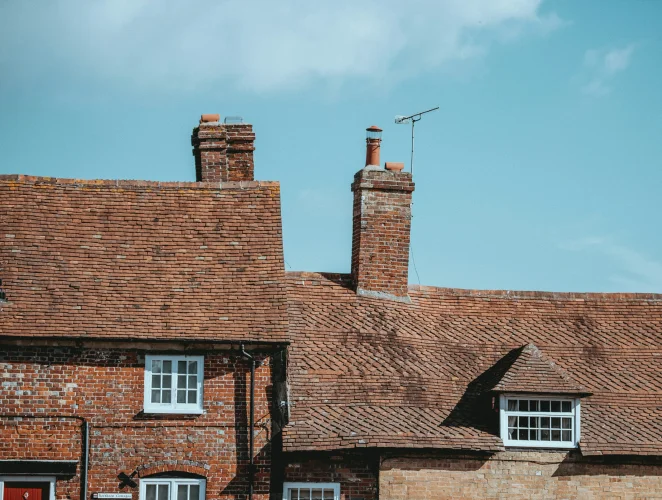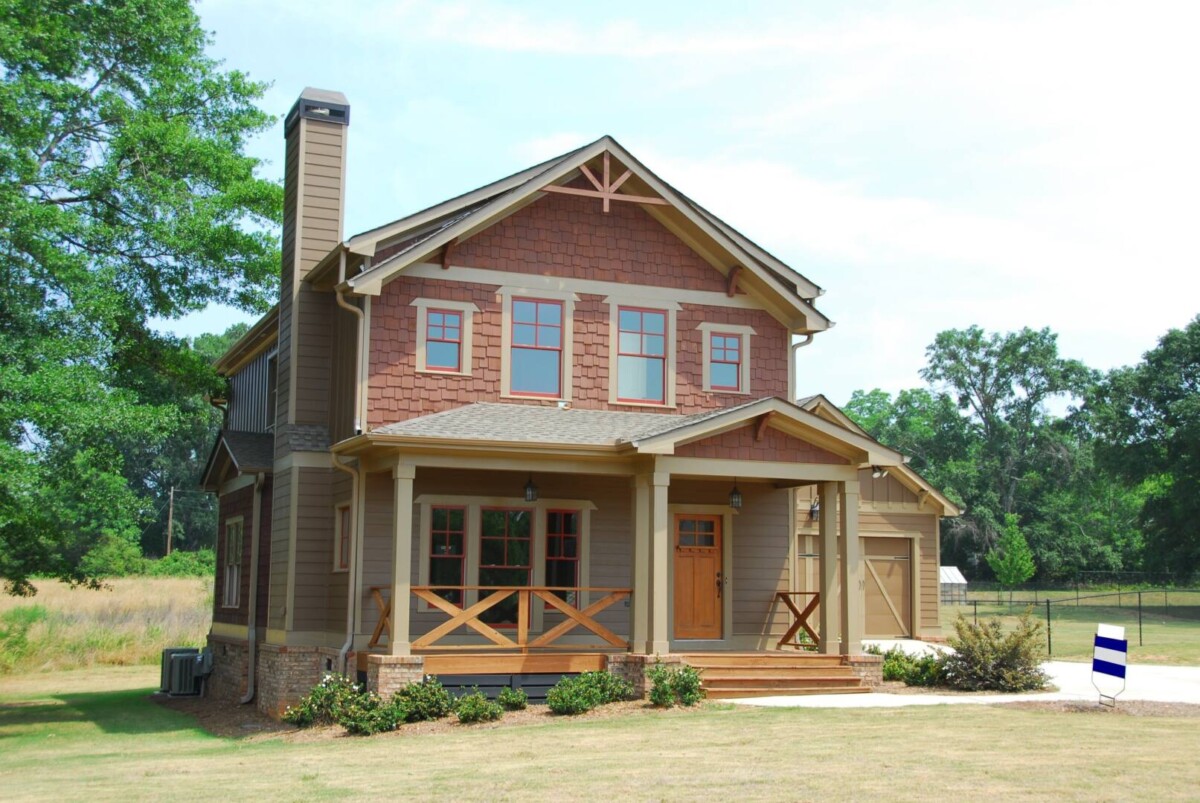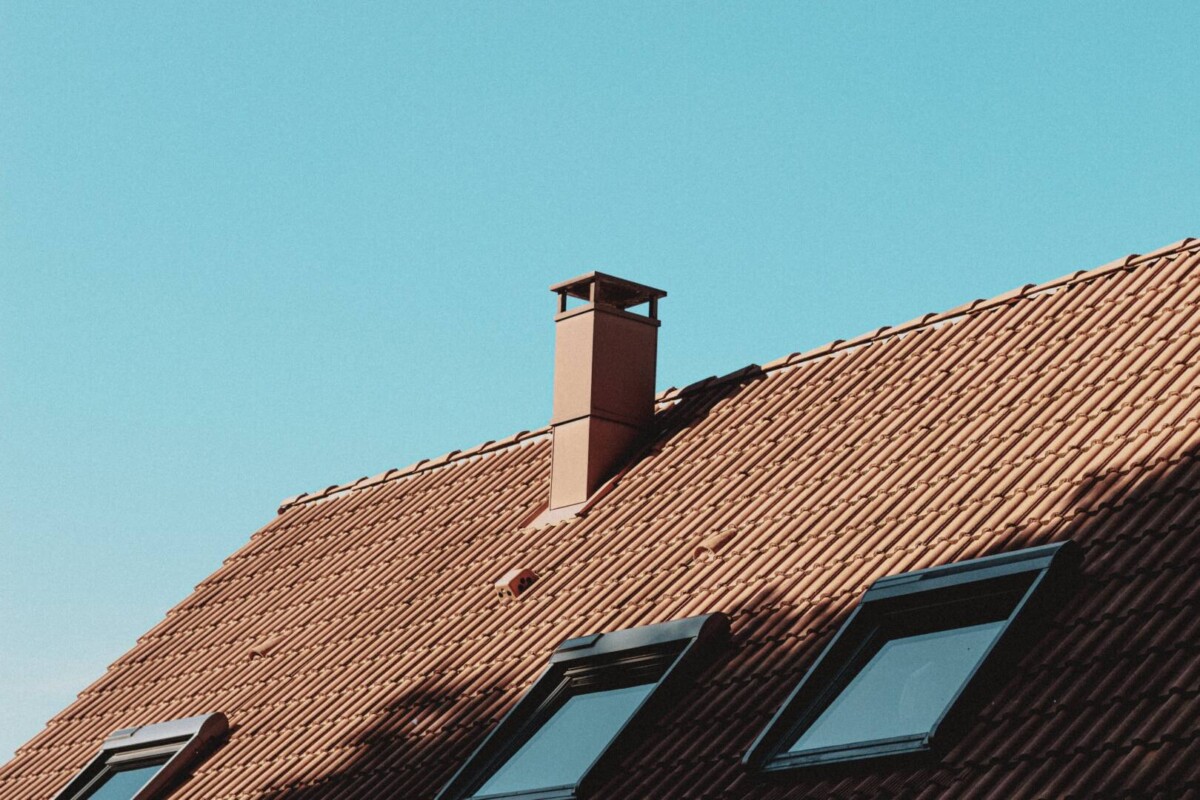
Why Is My Chimney Siding Melting?
It’s not something we see a lot, but occasionally we get calls from worried homeowners with a curious complaint. The chimney siding vinyl that covers their chimney has melted, causing it to warp and buckle. If this is happening to your chimney then you certainly want the answer to the burning question that many homeowners find themselves asking: “Why is the siding on my chimney melting?”
If you’ve noticed unsightly deformities or warping on the exterior of your chimney, you’re not alone. This common issue can be both perplexing and concerning, leaving homeowners searching for answers. It’s not something we see a lot, but occasionally we get calls from worried homeowners with a curious complaint. These calls normally come in after the siding has been replaced and during warmer spring or summer months.
Understanding the root causes of melting siding is crucial for homeowners looking to protect their investment, enhance curb appeal, and maintain the structural integrity of their homes. Our aim as your local Chicago area chimney experts is to provide valuable insights, expert tips, and actionable advice to help you address and preventing chimney siding issues.
In this exterior chimney siding guide, we will cover the reasons why the chimney siding might be melting, common chimney questions, and what you need to know about chimney siding repair. From environmental influences to construction materials and maintenance practices, we’ll uncover the key elements that play a pivotal role in your chimney siding health.

What is Chimney Siding, and What Purpose Does it Serve?
Before discussing the reasons why your chimney siding may be melting, it’s essential to understand what chimney siding is and its fundamental purpose in the overall structure of your home.
Chimney siding, also known as chimney cladding or chimney flashing, refers to the protective covering that surrounds the exterior of your chimney. This covering is crucial for shielding the vulnerable joints and intersections between the chimney and the roof from the harsh elements of the environment. Chimney siding is typically made from various materials, which could include metal, vinyl, or a combination of these. While metal cannot melt (at least under normal circumstances) vinyl can melt from exposure to heat.
What Purpose Does Chimney Siding Serve?
Alright, let’s talk chimney siding – the unsung hero of your home’s exterior. It’s not just about looks; this stuff does some heavy lifting for your chimney protection. Here’s what purpose your exterior chimney siding serves:
Chimney Flashing Provides Weather Protection
One of the main functions of chimney siding is to provide weather resistance. Your chimney flashing acts as a barrier against rain, snow, wind, and other external elements, preventing water from seeping into the vulnerable areas around the chimney. When properly installed and well-maintained the chimney flashing helps ensure the longevity of your chimney and the structural integrity of your home.
Chimney Siding Helps Prevent Leaks
Chimney siding plays a crucial role in preventing leaks. By creating a waterproof seal around the chimney, it helps helps safeguard your home’s interior from water damage, mold growth, and other issues that can arise when water infiltrates the building envelope. If your chimney siding is not doing it’s job, then you may notice that your fireplace has a strange smell, which could indicate mold or mildew growth.
Chimney Cladding Provides Aesthetic Appeal
Beyond its functional aspects, chimney siding contributes to the overall aesthetic appeal of your home. Well-designed and visually pleasing siding enhances the curb appeal, making your property more attractive and cohesive in its architectural style. Choose the type of chimney cladding that matches your home’s style for a seamless aesthetic appearance.
What Causes Your Chimney Siding to Melt?
If you have noticed that the siding of your chimney has melted, you’ll want to know why. While it’s not impossible that something in the chimney or fireplaces is malfunctioning causing the structure to overheat and melt the siding, there’s usually a completely different and more innocent explanation for why your chimney siding is melting.
Think about which direction your chimney is facing. If it faces in a direction that receives a healthy amount of sunlight, then there could be the reason. It’s very possible that the sun rays are reflecting off a nearby window on your home or a neighbor’s home and baking the siding in the summer sun. Think of it like a magnifying glass and an ant, only your exterior chimney siding is unfortunately the ant in this case.
Some of the more obvious clues that this is the cause are:
- The presence of a large south or west facing window nearby
- The size and or pattern of the melted siding and
- Unmelted nearby siding in areas that are shaded.
So, after determining that a window on your home or a neighbor’s home may be causing your vinyl siding to melt, what exactly can you do? Well, there are a number of steps you can take, some of which are more costly than others
How to Prevent Your Exterior Chimney Siding from Melting
If a the reflection of the sun’s rays are causing your chimney siding to melt, then you need a way to protect it. Fortunately there are some tricks you can do to help protect your chimney siding from the sun’s rays.
- Install an awning over the window. Adding an awning will help block those harmful sun rays from hitting your window and will also help you save energy on the inside of your home.
- Plant vegetation that will cover the siding with shade. Vegetation will help soften the impact of the reflected light.
- Install a screen outside. Putting a screen over your window should help diffuse the sunlight bouncing off the glass and lessen its impact on the siding.
- Replace damaged siding with high heat siding. High heat chimney siding can withstand temperatures of well over 200 degrees. Yes, it is more expensive, but if you’re only installing it on a small portion of your house, it may be worth the additional investment.
Now, having said all this, if there are no windows in the area of your chimney and you have melted siding, there is likely a serious issue with your chimney or fireplace. Before lighting another fire, it’s essential that you call in a certified chimney sweep to perform a full inspection to determine the problem. You may have a potential fire hazard and you don’t want to risk the safety of your home.

How to Repair Chimney Siding
Unfortunately once your chimney siding has melted there is not much that you can do to fix the melted cladding. The best way to maintain your chimney flashing integrity is to prevent it from melting in the first place. But if you do have melted chimney siding, then replacement is the best option for repair.
First you want to clean the affected area and make sure that it is free of any debris or loose materials on the surface. Carefully remove the damaged siding area and make sure not to cause any damage to the remaining chimney siding. Take your new chimney siding and carefully install it according to the manufacturers guidelines. You will need to use exterior high-quality caulk to seal the new chimney flashing.
Need Your Chimney Inspected or Cleaned? Call the West Chicago Chimney Service Experts
When it comes to your chimney siding their is likely a simple reason why it has melted, but sometimes there is a larger problem at play. Remember the outer side of a chimney should never be too hot to touch, and an overheated chimney is a serious fire hazard for you and your family.
If you suspect your chimney may be running too hot, contact the pros at Valley Chimney Sweep & Restoration today. Our team of West Chicago area chimney experts can inspect your chimney and identify any issues that may pose a risk to your home.
Back To Blog

